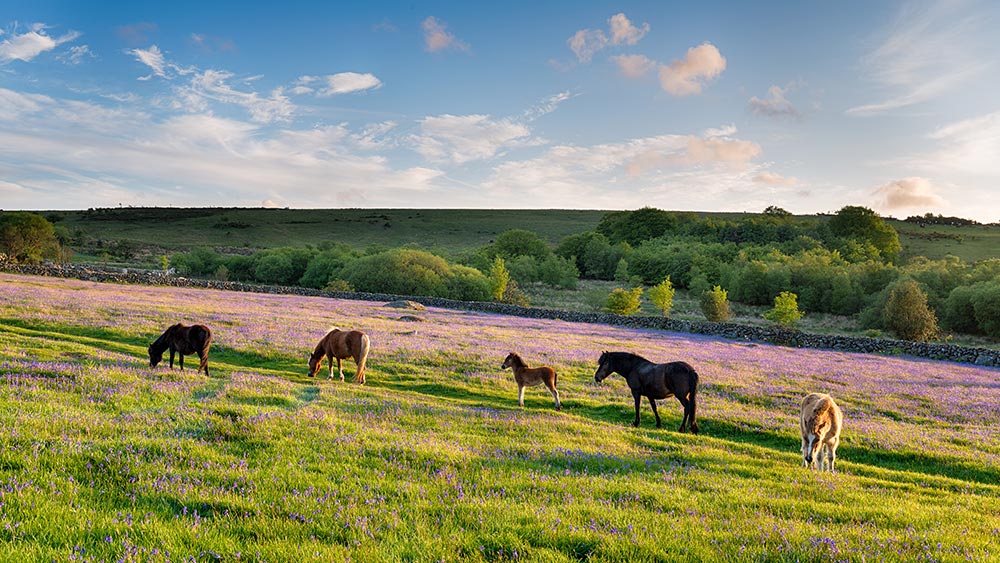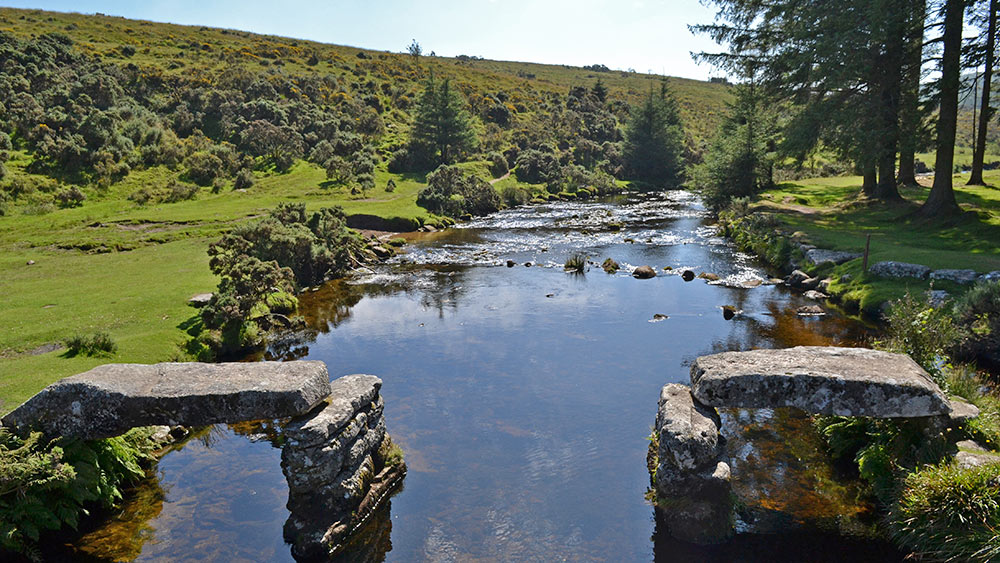Dartmoor’s Wildlife
Discovering Dartmoor with Devon Wildlife Trust’s Sephen Hussey
Nowhere captures the rugged splendour of Britian’s great outdoors more fittingly than the wild uplands of Dartmoor.
Helping to preserve this ancient landscape is the Devon Wildlife Trust and its handful of moorland reserves. We chatted with the trust’s Stephen Hussey to find out more about Dartmoor’s habitats and the wildlife that lives there.
What’s unique about Devon Wildlife Trust’s nature reserves on Dartmoor?
Our nature reserves contain some of the best examples of wildlife-rich habitats on Dartmoor. At Emsworthy Mire you can see classic open moorland with wildflowers, including an incredible display of bluebells each May. At Blackadon and Dart Valley nature reserves you can discover ancient woodland and white-water rivers. At Bellever Moor and Meadows you can walk among hay meadows, while at Dunsford it is the River Teign which leads you down an enchanting Dartmoor river valley.

What kinds of wildlife live there?
Countless species, from the common to the exceptionally rare. Highlights include cuckoos calling at Emsworthy Mire, high brown fritillary butterflies at Dart Valley, otters hunting at Dunsford and moss and lichen covered trees at Blackadon.
What kinds of wildlife is the trust trying to encourage?
All wildlife! Nature is struggling with so many pressures at the moment; this makes our nature reserves (we have 58 across the whole of Devon) vital havens. Our work on Dartmoor helps charismatic creatures such as dormice and rare butterflies, but it also benefits less familiar ones. Did you know, for example, that one of the world’s largest molluscs finds a home at our Dart Valley reserve? Measuring a massive 20cm+ the ash black slug slithers its way around the nature reserve during summer nights!
Do you welcome many migratory species?
Yes, of course. Our Dartmoor nature reserves welcome a host of migratory bird species each spring and summer. Our woodlands are especially important as nesting places for species including spotted flycatchers, pied flycatchers and wood warblers. The sound of the latter’s beautiful song is the quintessential sound of a Dartmoor oak woodland in spring.
Are the trust’s nature reserves on Dartmoor open to walkers?
Yes, all our Dartmoor nature reserves are open to the public 24/7 and are free to enter. You can complete classic moorland walks which include them.

What can visitors do to ensure they ramble responsibly?
The best advice is to follow the Countryside Code and any local signs. These include:
- Leave no trace of your visit – take all your litter home
- Don’t have BBQs or fires
- Keep dogs under close control
- Bag and bin your dog’s poo
- Leave gates as you find them
And two specific things for Dartmoor – park considerately (don’t block gateways, lanes, etc) and don’t feed the ponies!
Can you explain a bit more about the trust’s ongoing projects on Dartmoor?
Nature reserves take a lot of effort to look after so that they can remain good places for wildlife and people. We have a team of dedicated staff who undertake this work, but they are helped by local people who volunteer for us. The work isn’t always the most glamorous and includes digging ponds, laying boardwalks, tree planting and fixing gates, but it is vital.
Why is the trust’s work so essential for the future of Devon’s wildlife?
Our natural world faces so many acute pressures at the moment – from a climate emergency to rising plastic pollution, etc. Things can seem hopeless. But our work on our beautiful Dartmoor nature reserves and beyond does show that wildlife can recover and flourish.
What challenges does the trust face in its efforts to preserve these precious reserves?
We’re a charity and rely on the generosity of others to do the work we do for nature. So, the basic message is; if you like the places we manage, then please support us.
How can we find out more about the trust’s work both on Dartmoor and in Devon?
The best place to start is our website www.devonwildlifetrust.org .There you’ll find details of how to find and visit our 58 nature reserves and how you can support the work we do.
A big thank you to Stephen Hussey of the Devon Wildlife Trust for introducing us to the trust’s beautiful Dartmoor nature reserves, and for highlighting all the vital work they do.
